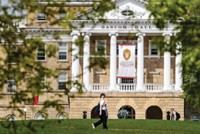Advertisement
Grab your lab coat. Let's get started
Welcome!
Welcome!
Create an account below to get 6 C&EN articles per month, receive newsletters and more - all free.
It seems this is your first time logging in online. Please enter the following information to continue.
As an ACS member you automatically get access to this site. All we need is few more details to create your reading experience.
Not you? Sign in with a different account.
Not you? Sign in with a different account.
ERROR 1
ERROR 1
ERROR 2
ERROR 2
ERROR 2
ERROR 2
ERROR 2
Password and Confirm password must match.
If you have an ACS member number, please enter it here so we can link this account to your membership. (optional)
ERROR 2
ACS values your privacy. By submitting your information, you are gaining access to C&EN and subscribing to our weekly newsletter. We use the information you provide to make your reading experience better, and we will never sell your data to third party members.
Policy
Bayh-Dole Doing Its Job, NRC Says
by David J. Hanson
October 11, 2010
| A version of this story appeared in
Volume 88, Issue 41
A National Research Council study on the changes created at universities by the 1980 Bayh-Dole Act finds that the law is generally working well. The law permits universities to retain intellectual property rights to inventions that are the result of federally funded research. “The movement of intellectual property from universities to new and mature companies is a healthy process, but one that can be improved,” said Mark S. Wrighton, chair of the committee that wrote the report and professor of chemistry at Washington University in St. Louis, in a statement. The NRC committee said concerns that universities might prioritize commercialization of inventions at the expense of their traditional mission of pursuing fundamental knowledge have not materialized. Among the study’s recommendations is a call for better oversight of the technology transfer process, on the part of both university transfer offices and the federal government, to make sure the law is implemented properly.



Join the conversation
Contact the reporter
Submit a Letter to the Editor for publication
Engage with us on Twitter